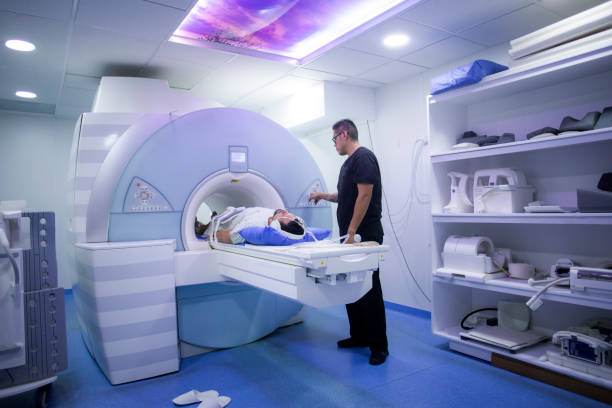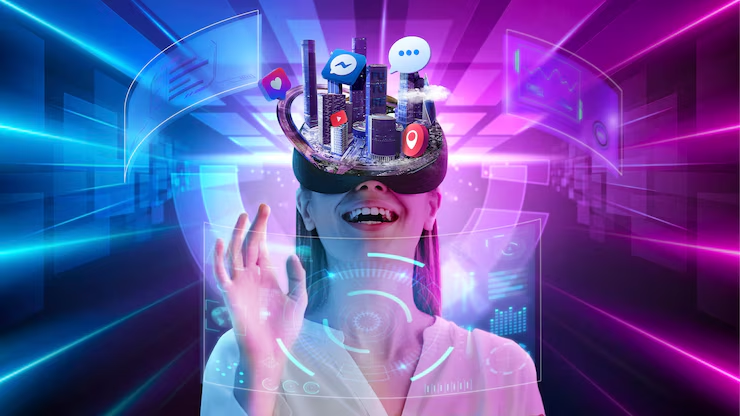Technology
Unlocking the World of MRI Tech: A Comprehensive Guide

MRI tech has revolutionized medical imaging, offering detailed insights into the human body without invasive procedures. MRI tech is at the forefront of diagnosing complex conditions and guiding treatments, making it an essential part of modern healthcare. This article explores everything you need to know about MRI tech, from its fundamentals to its applications in medicine.
What is MRI Technology?
MRI, or Magnetic Resonance Imaging, is an advanced imaging technique that uses magnetic fields and radio waves to create detailed images of internal body structures. Unlike X-rays or CT scans, MRI does not involve radiation, making it a safer option for repeated use.
How MRI Technology Works
MRI tech operates by aligning hydrogen atoms in the body using a powerful magnetic field. When exposed to radiofrequency pulses, these atoms produce signals that are captured and transformed into images by a computer. The process is non-invasive and provides unparalleled clarity for diagnosing various conditions.
The Role of an MRI Technologist
MRI technologists are skilled professionals who operate MRI machines and ensure patient safety during the procedure. Their responsibilities include preparing patients, conducting scans, and assisting radiologists in interpreting the results. Technologists play a critical role in maintaining the accuracy and efficiency of MRI imaging.
Key Components of an MRI Machine
MRI machines consist of several components that work together to produce high-quality images.
The Magnet
The magnet is the core component of an MRI machine, generating the magnetic field necessary for aligning hydrogen atoms. Most MRI machines use superconducting magnets for superior performance.
Radiofrequency Coils
Radiofrequency coils transmit and receive signals during the imaging process. Different coils are used for imaging specific body parts, such as the brain, spine, or joints.
The Console
The console is the control center where technologists operate the MRI machine, adjust settings, and monitor the imaging process in real-time.
Types of MRI Scans
MRI technology can be adapted to capture images of various body systems, making it a versatile diagnostic tool.
Brain MRI
A brain MRI is used to detect conditions such as tumors, strokes, and neurological disorders. It provides detailed images of brain structures, aiding in accurate diagnosis.
Cardiac MRI
Cardiac MRI captures images of the heart and blood vessels, helping diagnose conditions like heart disease, congenital defects, and aneurysms.
Musculoskeletal MRI
Musculoskeletal MRI focuses on bones, joints, and soft tissues, making it invaluable for diagnosing injuries, arthritis, and other orthopedic conditions.
Abdominal and Pelvic MRI
This type of MRI is used to assess organs in the abdomen and pelvis, such as the liver, kidneys, and reproductive organs, for tumors, infections, or other abnormalities.
Benefits of MRI Technology
MRI technology offers numerous advantages, making it a preferred choice for medical imaging.
Non-Invasive Procedure
MRI scans are completely non-invasive, eliminating the risks associated with surgical procedures.
High-Resolution Images
MRI provides high-resolution images that allow for precise diagnosis and treatment planning.
No Radiation Exposure
Unlike X-rays and CT scans, MRI does not expose patients to ionizing radiation, making it safer for long-term use.
Versatile Applications
From detecting brain disorders to diagnosing joint injuries, MRI technology has a wide range of applications.
Challenges in MRI Technology
Despite its benefits, MRI technology comes with certain challenges that healthcare professionals must address.
High Costs
The cost of MRI machines and procedures can be prohibitively expensive, limiting accessibility for some patients.
Patient Discomfort
The enclosed design of MRI machines can cause claustrophobia in some patients. Open MRI machines are a solution, but they may not be available everywhere.
Noise Levels
MRI machines produce loud noises during scans, which can be uncomfortable for patients. Technologists often provide earplugs or headphones to mitigate this issue.
Motion Sensitivity
MRI scans require patients to remain still for extended periods, which can be challenging for some individuals, especially children or those with certain medical conditions.
Innovations in MRI Technology
Recent advancements have made MRI technology more efficient, accessible, and patient-friendly.
Faster Scanning Times
Newer MRI machines feature faster scanning times, reducing patient discomfort and increasing throughput for healthcare facilities.
Functional MRI (fMRI)
Functional MRI measures brain activity by detecting changes in blood flow, offering insights into neurological and psychological conditions.
Artificial Intelligence Integration
AI-powered algorithms are now being used to enhance image quality, detect anomalies, and assist in diagnosis, improving the overall efficiency of MRI technology.
Portable MRI Machines
The development of portable MRI machines has made imaging more accessible, especially in remote or underserved areas.
Career Opportunities in MRI Technology
MRI technology offers a range of career opportunities for individuals passionate about healthcare and technology.
MRI Technologist
As an MRI technologist, you’ll operate MRI machines, interact with patients, and collaborate with radiologists to produce accurate images.
Radiologist
Radiologists specialize in interpreting medical images, including MRI scans, to diagnose conditions and recommend treatments.
Biomedical Engineer
Biomedical engineers design and improve MRI machines, ensuring they are safe, efficient, and capable of producing high-quality images.
Preparing for an MRI Scan
For patients, understanding what to expect during an MRI scan can alleviate anxiety and ensure a smooth experience.
Before the Scan
Patients are asked to remove any metal objects, such as jewelry, as they can interfere with the magnetic field. In some cases, contrast agents are administered to enhance image clarity.
During the Scan
Patients lie on a table that slides into the MRI machine. It’s important to stay still during the scan to ensure clear images. Technologists communicate with patients throughout the procedure to provide reassurance and instructions.
After the Scan
Once the scan is complete, patients can resume normal activities immediately. Results are typically reviewed by a radiologist and shared with the referring physician.
The Future of MRI Technology
The future of MRI technology looks promising, with ongoing research focused on enhancing image quality, reducing scan times, and making the technology more accessible.
Advanced Imaging Techniques
Innovations like molecular imaging and ultra-high-field MRI are set to provide even more detailed insights into the human body.
Wider Accessibility
Efforts are being made to reduce the costs of MRI machines and procedures, making them accessible to a broader population.
Personalized Medicine
MRI technology is playing a crucial role in the shift toward personalized medicine, where treatments are tailored to individual patients based on detailed imaging data.
Conclusion
MRI technology continues to transform healthcare by providing accurate, non-invasive imaging solutions. From its versatile applications to ongoing innovations, MRI tech remains an indispensable tool in diagnosing and treating a wide range of conditions. As advancements continue, MRI technology is poised to become even more effective, accessible, and patient-friendly, cementing its place as a cornerstone of modern medicine.
Technology
Kingxomiz: Revolutionizing Digital Innovation in 2025

Kingxomiz: A New Digital Era Begins
In the rapidly shifting landscape of technology, the need for seamless digital solutions is growing fast. Kingxomiz has emerged as a groundbreaking brand committed to reshaping the future of digital innovation. Not only does it prioritize user-centric functionality, but it also delivers scalable, intuitive systems designed for modern digital professionals. As the digital age evolves, so does the demand for tools that can keep pace with transformation, and that’s where kingxomiz stands apart.
This article explores why kingxomiz is turning heads, how it’s solving real-world challenges, and why it’s quickly becoming a name to watch in tech.
The Vision Behind Kingxomiz
Founded with a futuristic vision, kingxomiz was created to bridge the gap between usability and complexity in modern software. Too often, platforms are either too basic to offer real utility or too complex for everyday users to navigate. The creators of kingxomiz envisioned something different—a space where intuitive interfaces meet enterprise-grade functionality.
Moreover, a major emphasis has been placed on design thinking, automation, and data-driven strategies, allowing users to work smarter and more efficiently. While the competition focuses on flashy features, kingxomiz commits to solving genuine workflow challenges.
Key Features of the Kingxomiz Platform
Understanding what sets kingxomiz apart requires a closer look at its robust features. These core components were built to make digital tasks easier while maintaining the highest standards of innovation.
User-Centric Interface Design
From onboarding to daily use, every touchpoint has been carefully optimized. Navigation is intuitive, colors are pleasant, and the learning curve is minimal. This ensures users of all skill levels can get started with minimal training. As a result, productivity increases almost instantly.
AI-Driven Automation
Time-consuming tasks can now be handled automatically. Whether it’s generating reports, analyzing behavior data, or setting up workflows, automation plays a central role. Users no longer have to waste hours on repetitive actions, which significantly enhances overall efficiency.
Modular Architecture
Flexibility is one of the most impressive aspects of kingxomiz. Its modular structure allows users to tailor the system to meet their exact needs. Businesses can scale or reduce functionalities depending on the demands of a given project. As growth continues, adapting the software doesn’t require a full overhaul.
Real-Time Data Sync and Cloud Storage
Data management is one of the major pain points for companies. Fortunately, kingxomiz addresses this by offering real-time data synchronization across devices, backed by secure cloud infrastructure. All changes are reflected instantly, regardless of where or how they’re made.
Integration Capabilities
kingxomiz has been built with interoperability in mind. It integrates seamlessly with most third-party platforms, including CRMs, project management systems, email clients, and more. This drastically reduces friction when onboarding kingxomiz into an existing tech stack.
Who Should Use Kingxomiz?
While it’s built with versatility in mind, kingxomiz is particularly valuable for:
- Digital agencies
- SaaS startups
- Marketing teams
- Freelancers
- IT professionals
- Product developers
The adaptable nature of its tools makes it suitable for both solo entrepreneurs and enterprise-level users. Because of its scalability, it fits perfectly into nearly any digital workflow.
Benefits of Choosing Kingxomiz Over Traditional Platforms
There are countless tools in today’s tech marketplace. However, few offer the combined ease-of-use, power, and adaptability that define kingxomiz.
Cost Efficiency
Subscription fatigue is real. Many businesses end up paying for tools they don’t use. With kingxomiz’s customizable features and modular pricing, businesses pay only for what they need. In the long run, this creates massive savings.
Performance Reliability
Downtime can be a productivity killer. Fortunately, kingxomiz is built on a robust infrastructure that guarantees 99.9% uptime. Additionally, the platform has built-in redundancy protocols that protect user data during outages or service disruptions.
Data Privacy and Compliance
In today’s environment, privacy regulations are tighter than ever. kingxomiz stays ahead of the curve by implementing end-to-end encryption, user data permissions, and GDPR compliance. Peace of mind comes standard.
User Testimonials and Industry Recognition
Since its launch, kingxomiz has received glowing feedback from professionals across industries. Many users report increased efficiency, smoother workflows, and better results.
Several industry awards have also been secured. These include recognitions for:
- Best UX/UI in SaaS (2024)
- Most Promising Startup (TechFuture Awards)
- Innovation in Automation (Digital Growth Forum)
User satisfaction continues to remain a priority, with new updates regularly released based on community feedback.
The Tech Behind the Platform
A modern solution requires modern technology. kingxomiz is built on advanced frameworks and APIs that prioritize both speed and reliability. Some highlights of its technical stack include:
- React and Vue.js for frontend flexibility
- Node.js and Python for backend logic
- MongoDB for fast, flexible data access
- AWS Cloud hosting for global scalability
- Custom APIs for third-party communication
Kingxomiz and the Future of Work
Workflows are changing fast. Remote work, hybrid models, and digital-first teams are the new normal. kingxomiz has embraced this evolution by crafting tools that not only support, but enhance these environments.
Collaboration Tools
In-built collaboration features such as shared workspaces, live editing, task assignments, and internal messaging mean that teams can work from anywhere while remaining aligned.
Productivity Metrics
Through smart analytics dashboards, managers can measure performance across tasks, users, and teams. Insights are presented in easy-to-digest formats to aid better decision-making.
Workflow Customization
Every team works differently. kingxomiz respects that by offering custom workflows that can be saved, shared, and replicated across departments or projects.
Expanding Ecosystem and Community Support
A tech solution is only as strong as the community around it. kingxomiz has cultivated an active, growing user base through:
- Online forums
- Webinars and masterclasses
- Plugin and template marketplaces
- Dedicated customer success teams
Furthermore, regular updates are shared publicly, with clear documentation to help users adopt new features quickly.
Kingxomiz’s Roadmap for 2025 and Beyond
Looking ahead, kingxomiz has big plans. The roadmap includes:
- Launching a mobile-first experience
- Integrating blockchain for data authentication
- Expanding into new languages and markets
- AI-based suggestion tools for workflow optimization
- Advanced gamification features for user engagement
Continued investment in research and development ensures that kingxomiz will not just keep pace but lead innovation in the software landscape.
Why Kingxomiz Is More Than Just Software
It’s tempting to categorize kingxomiz as just another tech platform. But the truth is, it’s something much more. It represents a philosophy of empowerment—giving users the tools they need to perform their best work without friction.
Its growing reputation, stellar performance, and emphasis on community-driven development suggest that it’s not just a passing trend. Rather, it’s a long-term solution built for today’s needs and tomorrow’s possibilities.
How to Get Started with Kingxomiz
Joining the platform is incredibly straightforward. Simply follow these steps:
- Visit the official kingxomiz website.
- Choose a plan based on your needs.
- Complete the onboarding wizard.
- Begin customizing your dashboard.
- Explore the tutorial library to unlock full potential.
From day one, users are supported with tooltips, guides, and human help if needed. Unlike many platforms, the entry barrier is minimal.
Final Thoughts
Kingxomiz is more than just a product—it’s a movement toward better digital efficiency. Designed for today’s challenges and tomorrow’s scalability, it continues to set new benchmarks in usability, integration, and innovation. For anyone serious about improving digital workflows, embracing kingxomiz may be one of the smartest decisions you’ll make in 2025.
Technology
IOFbodies.com Privacy: Ensuring Secure Digital Protection

Privacy concerns continue to grow as the internet becomes more interconnected. Protecting user data has become a top priority for online platforms. IOFbodies.com privacy policies focus on safeguarding sensitive information while maintaining transparency. This ensures that users feel secure while browsing, engaging, and storing personal data on the platform.
Understanding Online Privacy Risks
The digital landscape presents numerous threats, ranging from cyberattacks to data breaches. Many websites collect user information, often without clear consent, leading to privacy vulnerabilities. As technology advances, the need for comprehensive privacy protection becomes more urgent.
Common Privacy Threats
Numerous risks affect online privacy. Personal data theft occurs when hackers exploit security loopholes. Identity fraud becomes a major concern when private information is exposed. Additionally, unauthorized tracking raises ethical questions about data collection. IOFbodies.com privacy measures aim to counteract these threats effectively.
Why Privacy Protection Matters
Personal information is highly valuable. Companies use data to enhance user experiences, but security vulnerabilities expose individuals to risks. Protecting personal details prevents misuse and ensures digital freedom. When data security is prioritized, trust is established between platforms and users.
IOFbodies.com Privacy Measures
To maintain a secure browsing environment, IOFbodies.com implements cutting-edge security measures. These ensure that sensitive user data remains protected from unauthorized access, cyberattacks, and fraudulent activities.
Advanced Encryption Standards
Encryption plays a critical role in securing online data. IOFbodies.com employs robust encryption algorithms that protect sensitive user information. By using end-to-end encryption, unauthorized access is prevented. This ensures that user communications remain private and protected.
Strict Data Collection Policies
Collecting only necessary data is essential for privacy protection. IOFbodies.com adheres to strict policies that limit data collection. No unnecessary tracking or information harvesting occurs. Transparency is maintained by informing users about data usage.
Multi-Factor Authentication (MFA)
Passwords alone are no longer sufficient for account security. IOFbodies.com implements multi-factor authentication (MFA) to add an extra layer of protection. This method reduces the risk of unauthorized access, even if login credentials are compromised.
Anonymous Browsing and User Control
Users value anonymity while browsing. IOFbodies.com privacy features include anonymous browsing options, allowing users to navigate the platform without leaving traces. Additionally, users control their data settings, ensuring a personalized and secure experience.
How IOFbodies.com Privacy Protects Users
Privacy protection must be proactive rather than reactive. By implementing stringent security measures, IOFbodies.com ensures user trust while preventing data exploitation.
Preventing Cyber Threats
Hackers and malicious actors constantly seek vulnerabilities. IOFbodies.com privacy measures block unauthorized intrusions. Firewalls, intrusion detection systems, and regular security updates enhance protection.
User Awareness and Data Protection
Educating users about digital privacy strengthens overall security. IOFbodies.com provides clear guidelines on safe browsing practices. By promoting cybersecurity awareness, risks are minimized.
Compliance with Global Privacy Regulations
Legal compliance is crucial for maintaining trust. IOFbodies.com aligns with international privacy standards, including GDPR and CCPA. This ensures ethical data handling while reinforcing platform credibility.
The Future of Digital Privacy and Security
As cyber threats evolve, privacy protection strategies must adapt. Future security trends will focus on enhanced encryption, AI-driven threat detection, and user-centric privacy controls. IOFbodies.com remains committed to staying ahead of these challenges.
AI-Powered Security Enhancements
Artificial intelligence plays a growing role in cybersecurity. Predictive analytics detect potential threats before they occur. IOFbodies.com integrates AI-driven security solutions to enhance digital protection.
Decentralized Data Storage
Traditional centralized data storage presents security risks. Emerging blockchain technology offers decentralized solutions. IOFbodies.com explores innovative approaches to further enhance data security.
Empowering Users with Greater Control
Privacy should be user-driven. Future enhancements will include customizable data permissions, secure cloud storage, and improved identity verification methods. By empowering users, digital trust is strengthened.
Final Thoughts
IOFbodies.com privacy policies prioritize user security through advanced encryption, strict data handling practices, and proactive cybersecurity measures. As online threats continue to rise, implementing strong privacy safeguards remains crucial. By staying ahead of technological advancements, IOFbodies.com ensures a secure and transparent digital experience for all users.
Technology
Simpcitu: The Future of Simplified Digital Solutions

Technology continues to evolve, driving businesses and individuals toward more efficient digital solutions. Simpcitu stands out as an innovative platform designed to streamline complex processes, enhance productivity, and integrate AI-driven automation seamlessly. Whether for startups, enterprises, or freelancers, Simpcitu promises to redefine how digital tools are utilized.
The Evolution of Digital Efficiency
As industries expand, the demand for seamless technology grows. Traditional workflows, once reliant on manual execution, are now being transformed by automation and AI-driven tools. Businesses seek solutions that reduce redundancy while maximizing efficiency. This necessity has fueled the rise of platforms like Simpcitu, which focuses on intelligent automation, cloud computing, and AI-based decision-making.
Why Digital Transformation Matters
Organizations prioritizing digital transformation gain a competitive advantage by leveraging automated solutions. Traditional methods often lead to inefficiencies, errors, and time-consuming tasks. Simpcitu offers a strategic approach that minimizes complexities while improving overall workflow.
The Role of AI in Business Optimization
Artificial intelligence has revolutionized multiple industries, from customer service to data analytics. AI-powered systems enhance decision-making, predict trends, and streamline operations. Simpcitu integrates AI to provide businesses with actionable insights, automated responses, and predictive analytics, ensuring optimal performance.
Understanding Simpcitu’s Core Features
To stand out in a highly competitive market, Simpcitu incorporates cutting-edge functionalities designed to simplify digital operations.
Seamless Automation and Workflow Management
Repetitive tasks can be automated effortlessly, allowing businesses to focus on core strategies. Simpcitu’s workflow automation ensures consistency, reducing errors while enhancing operational efficiency. With its intuitive dashboard, users can create, monitor, and optimize automated processes with ease.
AI-Driven Decision Support Systems
Data-driven decision-making is crucial in today’s fast-paced environment. Simpcitu’s AI-powered tools analyze vast datasets, generate insights, and recommend optimal actions. This feature assists businesses in making informed decisions while reducing the risk of human error.
Scalability and Cloud Integration
A major concern for growing businesses is scalability. Simpcitu is designed to adapt, providing cloud-based solutions that expand alongside business needs. Cloud integration ensures accessibility, data security, and seamless collaboration across teams.
User-Friendly Interface and Customization
Complex software often requires extensive training, delaying adoption. Simpcitu prioritizes simplicity with an intuitive user interface. Customizable features allow businesses to tailor the platform according to their specific needs, ensuring an efficient user experience.
How Simpcitu Benefits Different Industries
Various industries rely on technology for optimization. Simpcitu caters to multiple sectors, providing tailored solutions that enhance performance and productivity.
E-Commerce and Retail
For e-commerce businesses, automation is essential for order processing, inventory management, and customer engagement. Simpcitu’s automated workflows streamline these processes, ensuring real-time updates and efficient customer interactions.
Healthcare and Medical Data Management
The healthcare sector depends on accurate data handling and compliance with regulations. Simpcitu simplifies patient record management, automates administrative tasks, and ensures secure data storage. AI-driven analytics assist in medical research and patient diagnostics.
Finance and Banking
Financial institutions handle vast amounts of sensitive data. Simpcitu enhances security, automates financial transactions, and improves fraud detection using AI-based monitoring systems. Banks and financial firms benefit from streamlined operations and reduced risks.
Marketing and Customer Engagement
Marketing strategies rely heavily on data-driven insights. Simpcitu’s AI-powered analytics optimize campaigns, track engagement, and automate customer interactions. By predicting consumer behavior, businesses can create targeted strategies for improved ROI.
Education and Remote Learning
Educational institutions leverage technology for remote learning and course management. Simpcitu simplifies content distribution, automates student assessments, and ensures seamless communication between educators and students.
The Impact of Simpcitu on Business Growth
Adopting the right digital solutions can lead to exponential business growth. Simpcitu provides several advantages that contribute to organizational success.
Enhanced Productivity and Time Management
By automating repetitive tasks, employees can focus on high-value activities. Simpcitu minimizes manual intervention, allowing teams to work more efficiently. Improved time management translates into increased productivity and reduced operational costs.
Improved Data Security and Compliance
Data breaches pose a significant threat to businesses. Simpcitu incorporates advanced encryption and compliance frameworks to safeguard sensitive information. Businesses can operate with confidence, knowing their data is protected against cyber threats.
Seamless Collaboration and Integration
Modern businesses operate in interconnected environments. Simpcitu facilitates collaboration by integrating with existing tools and platforms. Whether for internal teams or external stakeholders, seamless connectivity enhances workflow efficiency.
Challenges and Future Developments
Despite its numerous advantages, digital transformation comes with challenges. Businesses must navigate these obstacles to fully leverage Simpcitu’s potential.
Overcoming Resistance to Change
Implementing new technology requires a shift in mindset. Employees may resist adopting automation due to unfamiliarity. Providing training and demonstrating tangible benefits can ease the transition.
Ensuring System Compatibility
Legacy systems may not always integrate smoothly with new digital solutions. Simpcitu addresses this challenge by offering customizable API integrations, ensuring compatibility with existing infrastructures.
Continuous Innovation and Updates
Technology evolves rapidly, necessitating continuous innovation. Simpcitu remains committed to staying ahead by incorporating emerging technologies such as machine learning, blockchain, and enhanced AI capabilities.
Final Thoughts
Simpcitu represents the future of digital automation and business efficiency. By streamlining workflows, enhancing decision-making, and improving collaboration, it empowers businesses to operate at peak performance. As technology continues to evolve, platforms like Simpcitu will play an even greater role in shaping the digital landscape. Organizations that embrace these innovations will stay competitive, maximize efficiency, and achieve long-term success.
-

 Health11 months ago
Health11 months agoUnlocking Knowledge and Wellness: Exploring the Vital-Mag.net Blog
-

 Apps11 months ago
Apps11 months agoHomeworkify: Revolutionizing the Way Students Approach Assignments
-

 News9 months ago
News9 months agoKristen Archives: Exploring a Treasure Trove of Online Stories
-

 Apps11 months ago
Apps11 months agoMangaBuddy: Your Gateway to Unlimited Manga Adventures
-

 Crypto10 months ago
Crypto10 months agoCrypto30x.com Gigachad: Redefining Cryptocurrency Success
-

 Apps10 months ago
Apps10 months agoSimpCity: Exploring a Unique Online Community
-

 Health11 months ago
Health11 months agoExploring the Mega-Personal.net Health Archives: A Treasure Trove of Information
-

 Apps10 months ago
Apps10 months agoTraceLoans.com Business Loans: Empowering Entrepreneurs with Financial Solutions
